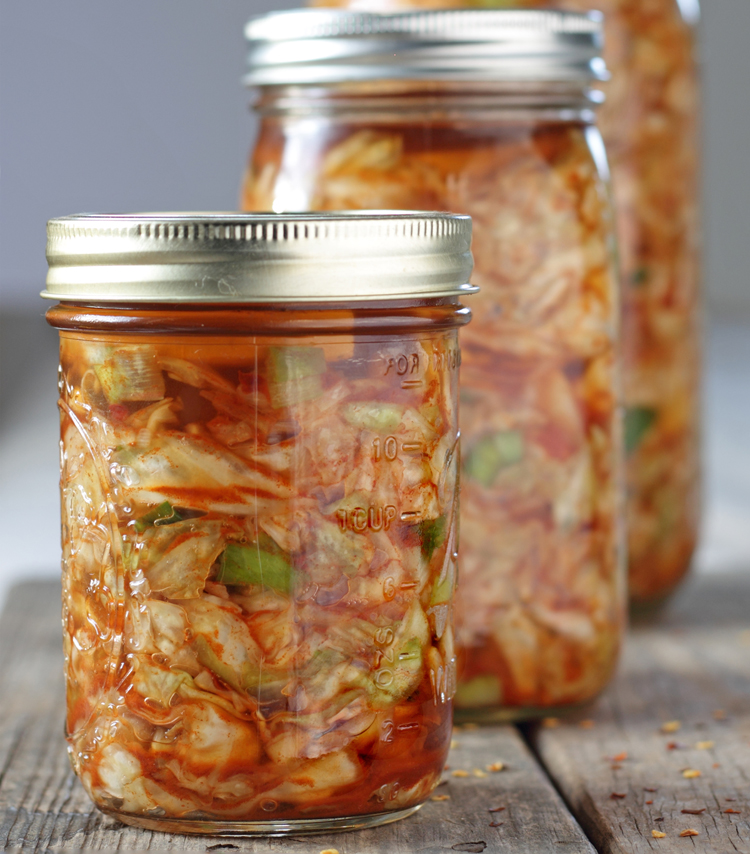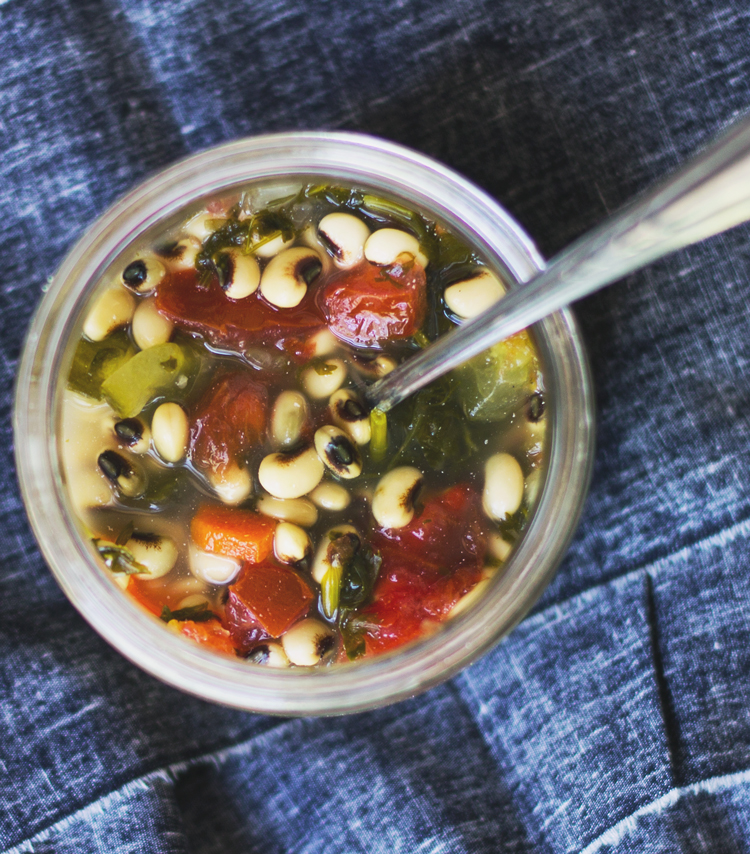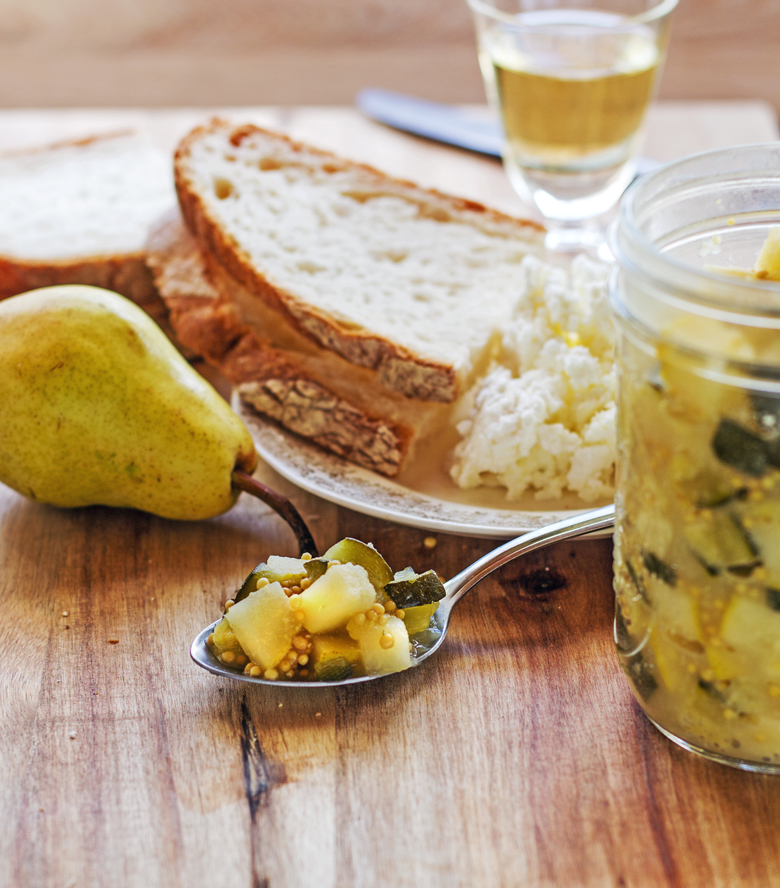You Don’t Need a Refrigerator to Store Lacto-Fermented Vegetables

I realize that this may be a widely debated topic, both on the internet and in various fermentation books. So I want to preface my take on it by sharing where I am coming from. I see vegetable fermentation as an absolute gift to the homesteader. It creates a food rich in enzymes and probiotics, is a quick and simple means of food preservation, and can be done on any scale with any amount of harvest. Most critically, for those of us interested in sustainability, it requires zero energy inputs from heat or refrigeration.
So while I am absolutely an advocate for eating a wide variety of ferments every single day for health reasons, I also see fermentation as I assume many of our ancestors did – as a practical means of food preservation. I now personally believe that refrigeration is not only not required for keeping fermented vegetables, it might actually be a hindrance in achieving well-preserved, tastier ferments. This has to do with the basic process of fermentation, the operational temperature of the bacteria needed for a full lactic acid fermentation, and the temperature control of the modern refrigerator. I detail all of this in Traditionally Fermented Foods.

It wasn’t until I was four to five years into vegetable fermentation that I began to hold this position. The first four years or so that I dabbled in vegetable fermentation, I lived on-grid. I made pickles and salsas and krauts, fermented them until they were active and bubbly, and then stored gallons of them in the refrigerator for six months or more.
Then I moved off-grid and while I knew theoretically that our ancestors stored fermented vegetables without refrigeration, I had no practical experience with it. Without a refrigeration setup that allowed for large quantities of fermented vegetables to be stored at or below 40 degrees, I turned to makeshift root cellars and good old counter tops to store these probiotic pickles.
And guess what? They tasted better. I had fewer instances of mold. And I know I’m not alone in this because I have spoken with other homesteaders with similar experiences. There were also some batches that did not keep as well. After a few more tests, I figured out that there are specific conditions necessary for the fermentative bacteria to do their job proliferating and preserving the vegetable. A read through of the biology of the process confirmed my findings.

How you put together your ferments and the conditions under which you ferment them is absolutely critical to storing ferments long-term without refrigeration. This can be done in crocks or jars; with cabbage or carrots or even shelling beans, but the keys to success seemed to lie not in refrigeration but in careful consideration and brine levels, fermentation temperature, and utilizing simple canning jars to create an ideal environment for lactic acid fermentation to take place.
I write about the details of all of these considerations and key steps in Traditionally Fermented Foods, including how long to ferment, how you really know when a ferment is ready, and giving your lacto-fermented vegetables exactly what they need to succeed.
But for those of you who are looking to sustainably store your garden or farmer’s market vegetables, I wanted to encourage you in knowing that you don’t need fancy equipment, starter cultures (including whey), or even refrigeration to create tasty, healthy, well-preserved ferments. With garden vegetables, salt, and a full understanding of the biological needs of lactic acid fermentation as it pertains to vegetables, you can store up your harvest simply and sustainably.

Thank you for this encouragement! I still struggle with the fear of leaving my ferments unrefrigerated even though my pickles seem to go downhill in the fridge after the 6 month point. My husband’s family is Korean and they have a great handle on fermentation as it still provides a large percentage of their diet and part of every meal – kimchi, miso, pan chan etc. His grandma has pictures of her storage in Korea. Many large crocks of fermented veggies buried up to the lid in her back yard to utilize the stable temperatures. Nowadays many of our Korean friends have specific “kimchi refrigerators” alongside their normal refrigerators that keep ferments at ideal gentle storing temps and maintain them at just the point they like for sometimes over a year. Many of them are very particular about the ripeness and texture of their ferments so these appliances feel like an absolute necessity for them. It’s a whole new world for this Pacific Northwesterner. Fermenting. Serious business. Yummy business. 🙂
Great post. SO informative. I am a newbie, by comparison. Love to learn from the more experienced.. Makes sense.. Thanks!!
I always thought the refrigerator stopped the fermentation process. Thanks for straightening me out.
I had no idea about not needing the refrigeration! I’m truly in awe of your beautiful book, your ‘chi and pear and zucchini mostarda looks so good! I haven’t had much luck with ferments so far, but I’m encouraged by reading this.
Why do you think it became common practice to move ferments to the fridge? Such a great point. When I started fermenting in a large crock I read about the traditional folks who just left their kraut in there for months and then kept fermenting new stuff with the old…
Megan – I think it became common practice because we took a historical practice and tried to cram it into our modern world of refrigeration and fear of things sitting out on the counter for months. Plus, some of the books that first introduce people to fermentation – i.e. NT – teaches us to ferment for 3 days and then put it into the refrigerator. In my experience, that works, but not as well as more historical practices.
Thank you! Great! As wonderful as NT is and was, it’s not all correct or perfect.
Megan – I agree!
This is a very valid point – our ancestors fermented foods as a way to preserve the harvest. I always keep my ferments out for as long as I can but then I still succumb to cold storage. :-/ Thanks for the encouragement!!
Ferments are hard to get used to when we’ve been taught for years the dangers of mold and spoiled foods! All you need to do is take a food handlers class to let the fear of botulism scare you for life! But fermentation is one of the oldest practices for food preservation and when done correctly is amazing! We use our root cellar and basement a lot to store ours! LOVE IT! Great post!
Hi, I am from Australia and tried to purchase your book, ‘Traditionally Fermented Foods’, but Amazon don’t ship it to Australia. Do you know of any other way to purchase it from Australia.
Kind regards
Stephanie